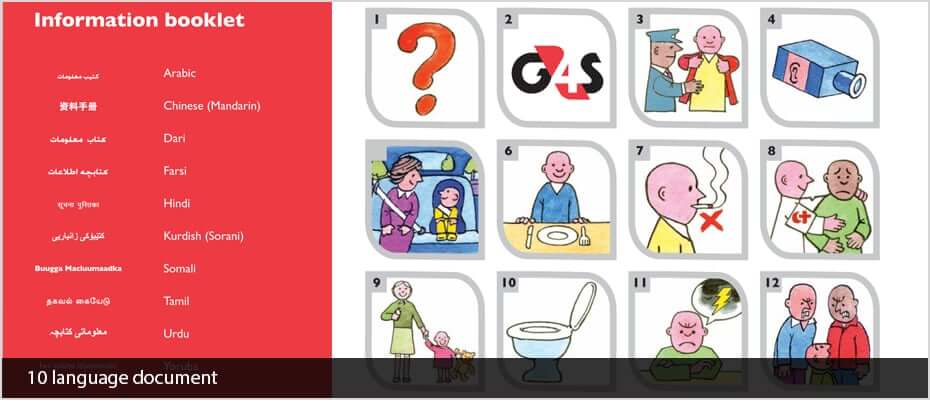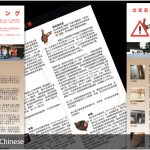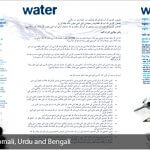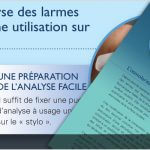Multilingual desktop publishing service
Adelphi has its own in-house desktop publishing studio providing Multilingual desktop publishing (DTP). All our Multilingual desktop publishing is handled in-house and carried out by our own experienced typesetters. Adelphi has built up expertise in using InDesign, QuarkXpress, FrameMaker, Illustrator and all Microsoft applications.
Adelphi Translations have been producing Multilingual desktop publishing for over 20 years. We produce all kinds of Multilingual desktop publishing materials including corporate brochures, packaging, business cards, posters and manuals.
Adelphi offers a complete desktop publishing and typesetting localisation service to its customers.
Clients:
For Amnesty International we have typeset brochures in Kurdish Sorani, Tamil, Italian, Chinese, Cambodian, Croatian, Farsi, Albanian, Malay, Urdu, Hungarian, Ukrainian, Sinhalese, Indonesian, Nepali, Korean, Russian, Lithuanian, Portuguese, Brazilian Portuguese, Khmer, Georgian, Serbian, Kinyarwanda, Swahili, Hindi, Bengali and Greek.
We work for companies and organisations such as Disney, Vidal Sassoon, and Jaguar Land Rover, to list a few. Plus international aid agencies such as Amnesty International, Refugee Action, UNICEF and the Refugee Council as well as many translation agencies all over the world.
A simple guide to localising InDesign files using translation software
By using an IDML file exported from InDesign we can speed up the translation and DTP process when using translation memory software. This method keeps all the formatting from the original InDesign file such as links, character and paragraph styles and fonts plus any interactive elements such as cross-references.
Click here to read more information
Desktop publishing tips for localising English materials
- In some designs the pages are simply filled with text, leaving no room for text expansion. Most languages (with some notable exceptions) run longer than English and some of them run much longer. This causes the localised versions to have to make some sort of compromise: either text becomes smaller or a condensed font is used, or some material is completely cut out for brevity. Neither scenario is ideal, so it is much better to consider this aspect of the task at the design stage.
- Overuse of text formatting features like coloured text, bold text and italic text etc. can slow down the localisation process, as the formatting needs to be applied to the precise word or phrase in translation that is equivalent to the English. Sometimes, this does not work at all if the target language has a dramatically different word order.
- Embedded, non-editable text in images require extra attention and can slow things down dramatically, especially when over the main part of the image. Where possible, the text should be made available for editing in InDesign. If not, we will require all of the PSD files to work with.
- Avoid designing paragraphs or “word clouds” with mixed font sizes that look good in English but have no chance of being replicated in the target language: quite often they do not have the same impact when localised and can often be “lost in translation”. Furthermore, due to word order difference, keywords in English at the beginning of a sentence might end up in the middle or at the end of the sentence when translated.
- One of the most frequent issues we encounter is the incorrect and inconsistent usage of style sheets, in particular where one style has been used but in some instances, bold text, italics or even different fonts have been changed manually. This can cause significant delays in the localisation process.
- Sending the artwork to be typeset BEFORE it is signed off by the client is never a good idea, and neither are new design changes after we have already started the work. We can do nothing in situations like these where significant changes are requested mid-project but start again and present new figures for the work, delaying work and incurring further costs for the client.
Your quote
Why choose Adelphi Translations?
In-house typesetting studio
All our of Desktop publishing services (DTP) are handled in-house and carried out by our own expert typesetters, offering you peace of mind and the highest assurance of quality.
Latest software
All our typesetting is carried out using the latest Adobe Creative Cloud, Microsoft and other software packages.
Large collection of fonts
Adelphi has a huge collection of fonts covering over 120 languages.
Adelphi Translations Limited is a company registered in England and Wales.
Company Number 06989736 · Registered Office Barnsley Digital Media Centre, County Way, Barnsley, S70 2JW, UK






















